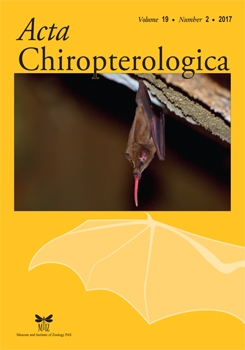The emergence of cave-dwelling bats can be influenced by multiple variables, such as diurnal predator evasion, energetic requirements, and prey abundance. This work aimed to determine emergence patterns of cave-dwelling bat species from roosts over the April–July 2013 period in the Valencian Community (East Spain) by infrared camera and acoustic recordings. We observed that Miniopterus schreibersii left earliest followed by the Myotis myotis/blythii group and Myotis capaccinii and finally Myotis escalerai. This pattern of emergence was observed in four roosts with no significant differences. Miniopterus schreibersii tended to display quicker flight in open areas, compared to the Myotis genus. Moreover, the M. myotis/blythii group and M. capaccinii were larger in size and had a greater wing loading than M. escalerai. Therefore, variations in emergence times may be due to differences in predation pressure by diurnal and crepuscular predators, which would enable large and fast bats like M. schreibersii to leave earlier, and thus, perhaps take advantage of insect abundance peaks. Another finding was that bats in general left earlier in relation to sunset in summer (particularly in June) than in spring. Differences between months could be attributed to the presence of lactating females in May and June in the genus Myotis, which have higher energetic demands than other reproductive classes and may need to forage for a longer time or travel to further distances. Different results were obtained for M. schreibersii, indicating different ecological pressures for this species.
How to translate text using browser tools
1 December 2017
Phenology of Emergence by Mediterranean Sympatric Cave-Dwelling Bats During Their Breeding Period
Irene García-Ruiz,
Marjorie Machado,
Miguel Á. Monsalve,
Juan S. Monrós
ACCESS THE FULL ARTICLE

Acta Chiropterologica
Vol. 19 • No. 2
December 2017
Vol. 19 • No. 2
December 2017
activity patterns
emergence timing
M. blythii
M. capaccinii
M. escalerai
maternity roosts
Miniopterus schreibersii




